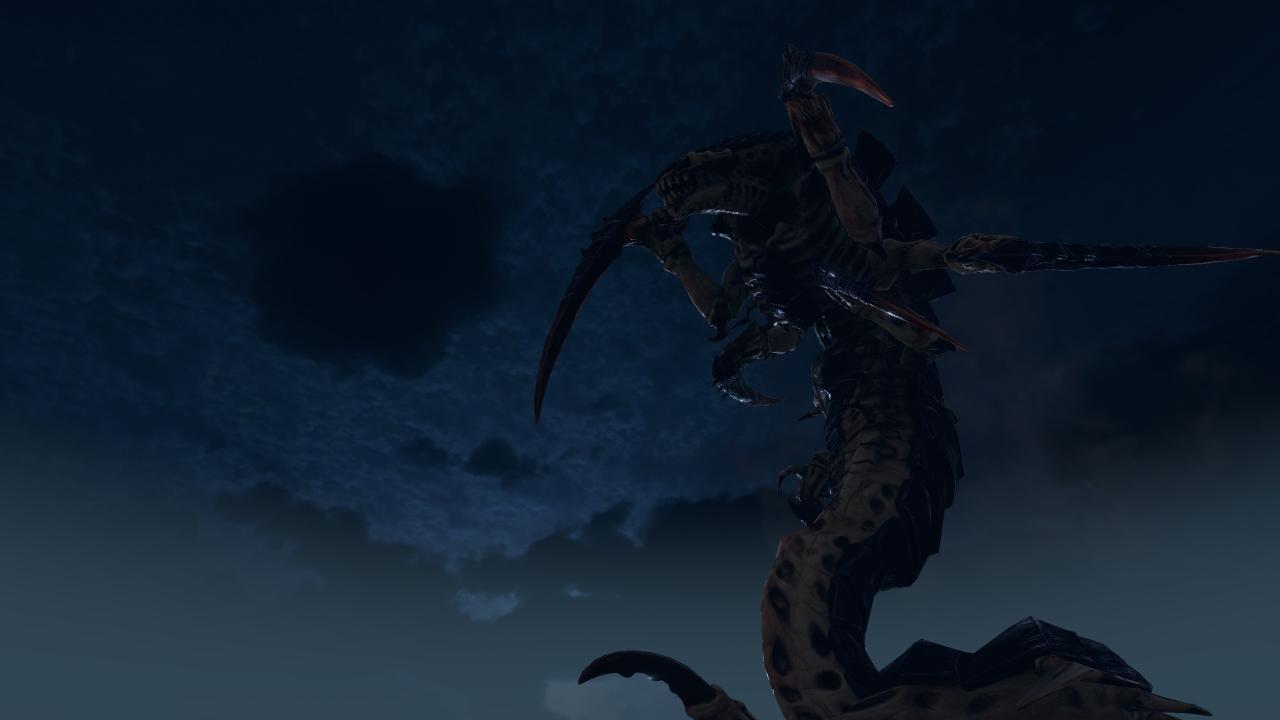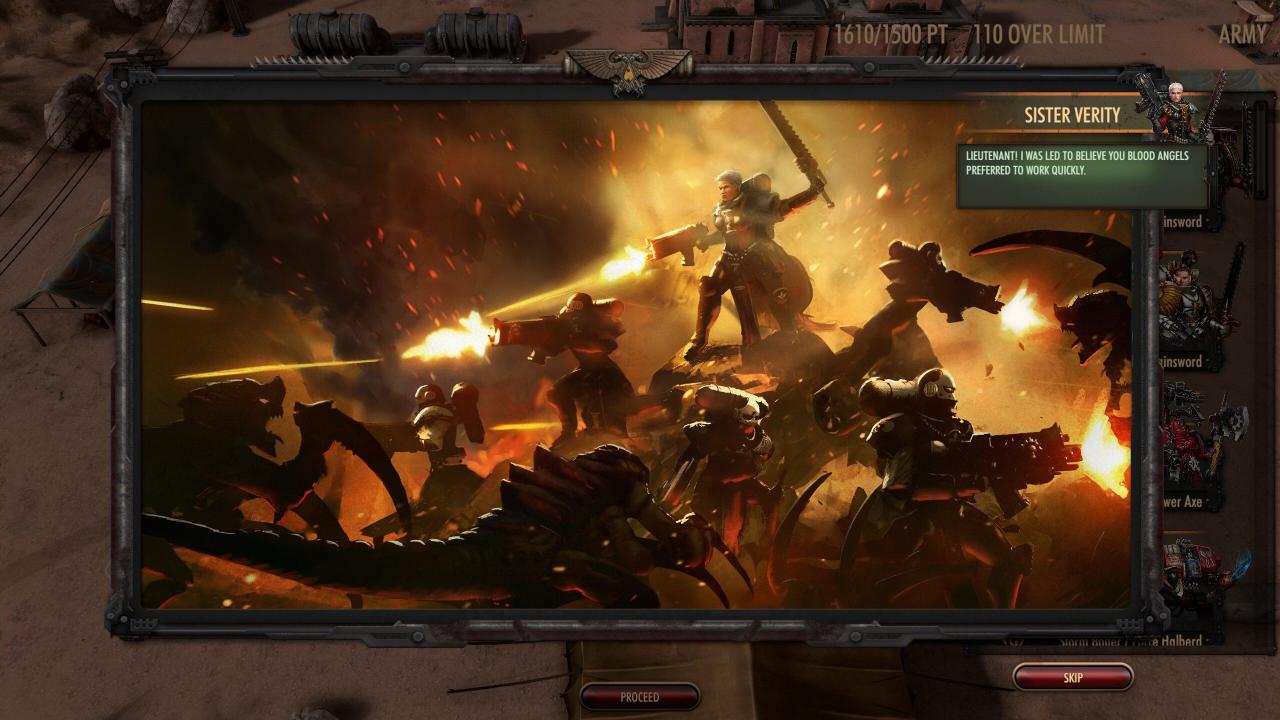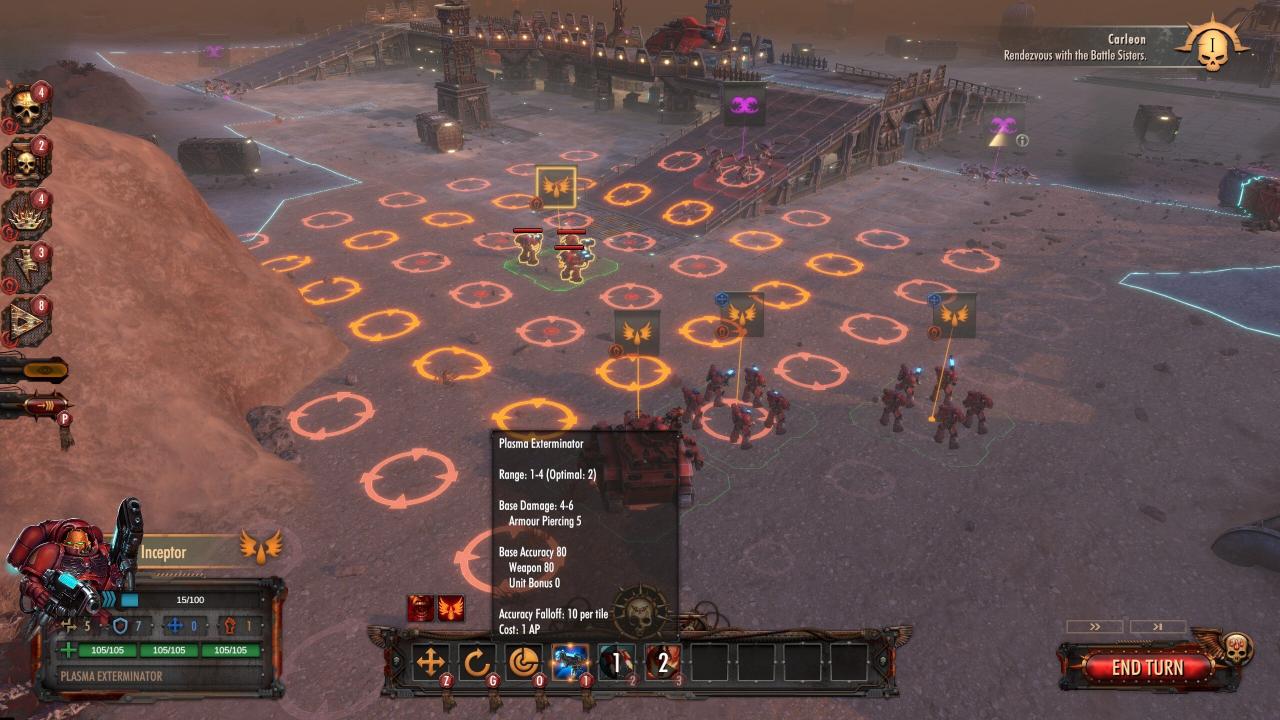Hello, reader. Strategical Showcase is here for you, reader. Here’s Strategical Showcase. What is this cryptic concoction? My dearest, Strategical Showcase, is my new feature. After years of research, this feature was expertly designed to highlight games you might be interested in, go in depth with their core mechanics, and end with a handy 5-star rating. The Strategical Showcase runs alongside its twin brother, “Wargaming Showcase”, where wargames in the traditional sense will be treated similarly.
I’ve written more about Warhammer 40,000 Battlesector than any other game in this website, so I’m not going to go over everything else I’ve already written. Let’s compile and readjust what needs adjusting and start from there. Let’s begin strong: “I’m pleased to say that Battlesector sent me back into long, eye-straining wiki reads to refresh my goldfish memory”.
Baal’s Devastation
The Indomitus Crusade, and the opening of the Great Rift saved the Blood Angels’ homeworld from extinction after the tyranids clapped Baal. It’s now time to slash the Tyranid Leviathan Fleet, as their ranks have been reinforced with the Primaris space Marines. Sergeant Carleon, rocket jumping into Baal Secundus is now charged with the task of assessing these new soldiers’ battle prowess against the Tyranid Leviathan menace.
They are a hit-or-miss enemy. Not universally loved or hated, they tread a dangerous middle ground in the Warhammer world. Their lack of character and generic appearance means there isn’t much of a story that can be told. This makes them unable to elevate the Battlesector story and those Marines who they fight. If generic space bugs who soviet-charge better equipped defenders does not kill off your interest (like they did to me), read on. The well-voiced Sergeant Carleon, and his Battle Buddy characters are engaging enough to support the story. While dynamic campaigns are a common feature of turn-based strategy games, Warhammer Battlesector’s campaign is just as straightforward as it gets.
The missions are not dynamic, but they do have a variety of goals to complete, rather than generic victory points. Black Lab Games created multi-staged missions, with evolving objectives, rather than the typical “kill all and see what happens” approach. The older and wiser version of me today enjoys the “unpredictability”.

The mission objectives can range from “let’s blast some Tyranids”, to rescuing Adeptas Sororitas, or even collecting gene seed from dead bodies. The varied missions are fantastic, but Sergeant Carleon’s men must always kill the tyranid forces at the end. After a thrilling rescue mission or a charge into an enemy’s position, the task of cleaning up afterward leaves an unpleasant taste in an otherwise exciting moment. The last parts of each mission portray the Sons of Sanguinius, who are brave and glorious as exterminators using plasma cannons and tanks instead of bug spray and hazmat suit.
Every couple of missions, new units will appear. Company commanders, like you, can unlock more equipment, skills and boosts. New units are introduced in every few missions. Units will stay on your roster and be available to you at any time.
The bloody joy of combat
You might try to scold for calling Battlesector a XCOM-like combat system, but can you think of a better description? It’s your turn to move units using movement points. Are you done moving? You can also use your Action Point to shoot, or vice-versa. The battle grid has a set of different squares that each unit can move through. When it comes to Action Points (AC), regular units only have one AC, while heroes get two.
The unit diversity and utility are not neglected. There’s a good amount of different units, each with its own little bits to be learned: gatling guns, metaguns and flamethrowers. Every situation and every weapon has its own equipment.
Battlesector does not have mixed weapon squads. A Squad of Intercessors is only allowed to carry ONE type of weapon. A squad of Assaults will carry only pistols and swords. It is possible that the ability to switch weapons on demand would ruin in-game balance, but to see Agressors running with chain swords would look like two meter tall medieval knights charging into a group of poorly equipped peasants. It’s a missed opportunity but it is easy to understand why.
It took me a while to understand how the hit percentage works when it comes to weaponry (this may have been in the tutorial, which I missed). Oi! Who doesn’t?). Each weapon has an “optimal” range that will increase its chances of hitting. Hellblasters, for example, are so bad at melee distances that they could not hit the barn’s side if inside. It’s important to consider this when positioning your units on the battlefield. This means that a couple of squares on the right will give you a 90 percent chance to kill those annoying Tyranid Warriors, but this also puts your Intercessors out in the open and at risk from being destroyed by the Tyrannofex. This decision can be made much easier if you ditch terrain modifiers.
Chapter commanders can unlock new weapons and updates throughout the entire campaign. They will also be able to choose between lead (or laser spitters) as an alternative for their basic gun. The new weapons will have 3D models with different stats, but they won’t change how a unit is played. The game’s lack of options and melee combat is a legitimate complaint, especially for one set in the 40K Universe. Only heroes and assault squads carry chainswords. Line soldiers are not allowed to engage in melee combat, which is a strange lack of choice given their size and ability to beat things down until they die.
The animations look and sound impressive. Bolters are imposing. Furioso’s dreadnoughts have a heavy footfall and their melee animations never fail to be both violent and graceful. They spray paint the moon in red shades with Tyranid material.
The enemy turns are quick, but you can easily keep up with everything that is going on. While enemies move and execute actions, the player can also look around. It is really exceptional that the player can set up several actions simultaneously, rather than having to watch the entire move-firing animations. This and other small things can help to keep combat from becoming too long-winded. X-COM achieves this by showering the players with cinematic cameras. Battlesector takes a simpler approach.

This game does a fantastic job with path-finding. The units don’t follow the squares to their enemies. They act less robotically, and charge between friendly lines without hesitation.
It’s now time to finish up this section by addressing the momentum system. Although they look cool on paper, I’ve only used them a handful of times in more than 12 missions. It takes an incredibly long time to build up the momentum needed to use it. Careful commanders will have a harder time gaining the momentum they need because not engaging in combat and overwatching enemies drains your meter. However, the more impressive and powerful commander abilities are: The strafing runs are the most impressive, simply because they can take out three Hormagaunts.
I’m sorry I have to mention this, but despite the fact that the game focuses on affirming the Primaris as a force in battle, it doesn’t do much to emphasize the importance of their existence, particularly after the Blood Angels became an endangered species following the Devastation of Baal. As you can see dear reader, losing a member of a team has no effect on the next missions. That soldier is replaced just as if it never happened. Worse yet, no experience points are accumulated for the unit between missions. It was a challenge for me to not lose any units. I did this because it seemed to make sense and helped me to be more involved in the story.
The Tyranids’ AI has a bit of a brain deficit. It seems to be firing randomly with little or no focus on a specific unit. The AI never finishes off low-HP units, and will even move into melee distance of my unit and take no action. It would be nice to fine-tune the AI before final release.
The combat in Battlesector, while complex, isn’t difficult to master. The combat in Battlesector isn’t difficult, despite its complexity. This is because the game displays the information quickly and clearly, so the player doesn’t have to navigate through a confusing array of menus or tabs just to learn about one simple modifier. These small details, as I mentioned above, make all the difference. The system knows which information commanders need to make decisions, rather than reading statistics.

Look good for the Emperor Manking!
The Emperor is an attractive man. The Emperor of mankind has a unit chin, with long hair that is luxurious and tall. Black Labs was so inspired by the looks of His Holiness that they decided to put in the most effort and respect possible to bring out the smooth lines that are the Primaris space Marine design. A picture is worth 1,000 words. Here’s an assortment of Primaris Space Marines in their prime.
Roboute Guilliman: How to manage it
The Army Manager is composed of three main tabs. “Add Unit” will show units that are willing to sacrifice their lives for the Emperor. The “Units Under Command”, which displays those who will definitely lay down their lives for the betterment of mankind, is next. Reserves is the tab where you can place your unimportant units that will be given one more day to live before they are inevitably destroyed. You can bring a unit over for inspection to see their statistics: HP, members of the unit, actions points, movement point, weapons, history, and abilities.
A RPG style upgrade screen is also available, which appears between missions. This allows Blood Chapter Commanders to greatly improve the units they have at their disposal. They range from flat boots with +HP,+Melee Accuracy and +Movement to more advanced abilities like Frag Grenades. These include commanders and units active abilities such as Frag and Krak Grenades.
The game allows for other equipment to be outfitted, such as alien gutting gear, in case bolting the xenos on walls with single-shot rifles wasn’t enough. According to what I have seen, which is nearly 30 hours into the game, each unit will be able to choose between one or two weapons. The Furioso Dreadnought has three. The visual aspect of the game has also been affected by these changes. It might be a minor detail for others, but I find that visual feedback is important, in even the most minute details. This adds a touch of authenticity to the game and shows the developer’s attention and care.

Minor Complaints
Although Battlesector has a lot of potential, it is not without flaws. I would like to see a few issues resolved before the launch. When resolving combat between units, the camera takes a dive into an endless abyss when it clips outside of the map. It’s easy for older games, like Combat Mission to be forgiven, but with the graphic fidelity that Battlesector offers, it is hard to overlook. This is not a game-breaking issue, by any stretch of the imagination, but its presence and nauseating look are enough to make it difficult to overlook.
I feel like the unit upgrade options are a waste of time. They don’t add any variety to gameplay, they just make units more durable, accurate, or thicker. Some upgrades, in my opinion, are pretty essential.
Battlesector’s UI is fantastic, but there is a small change that needs to be made: There is no clear indication of when your momentum can now be used as an advantage. It’s just a matter of making it more obvious or even adding an audio signal.